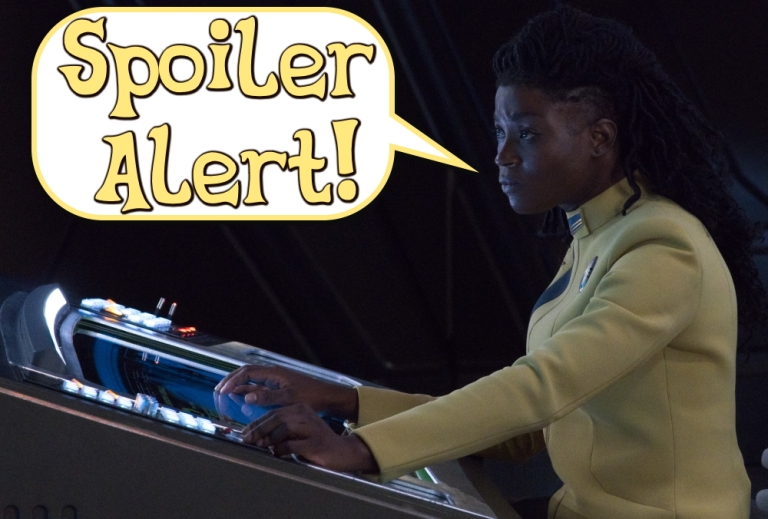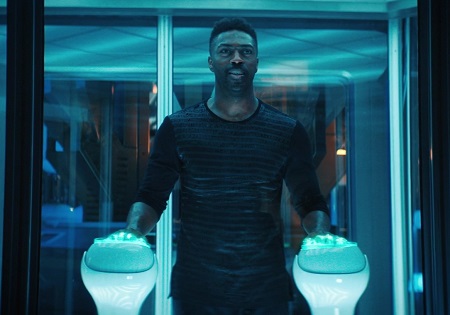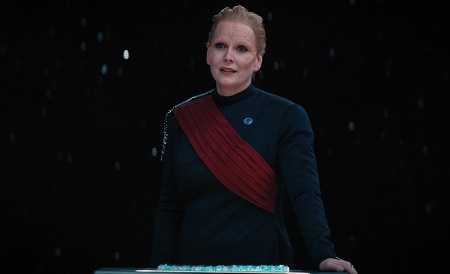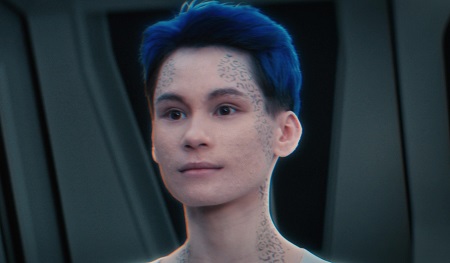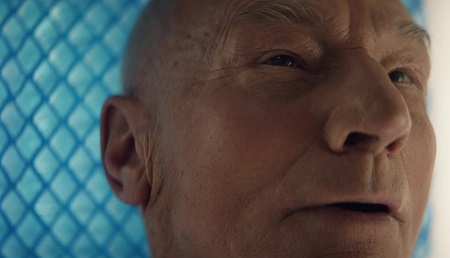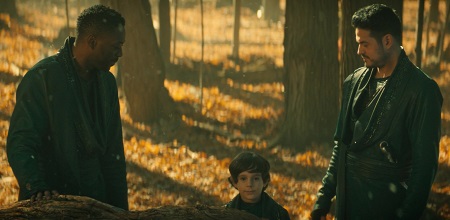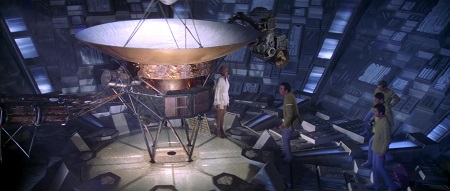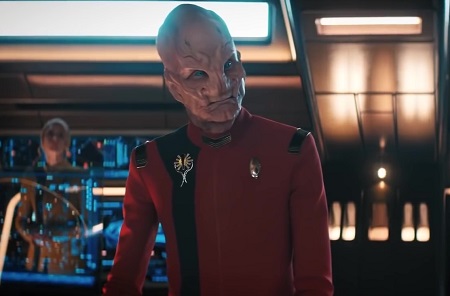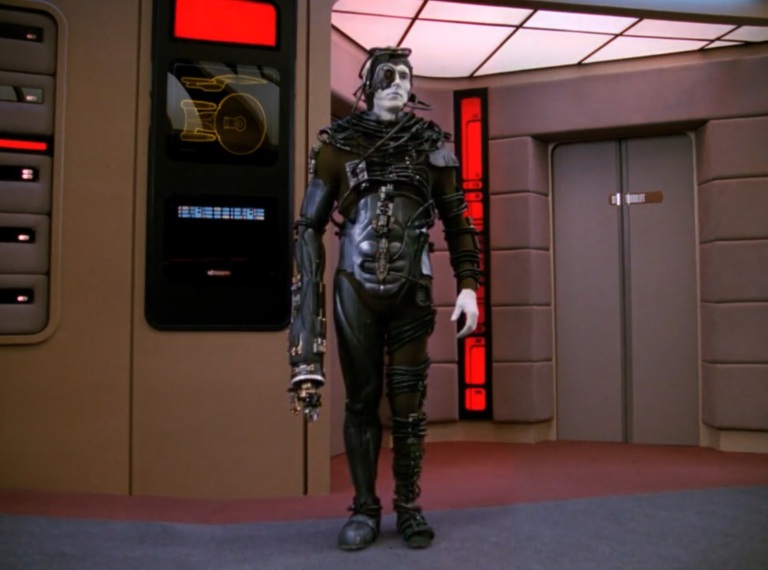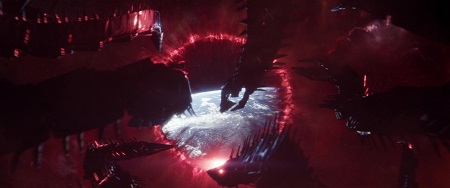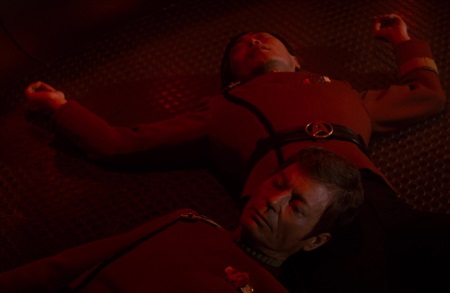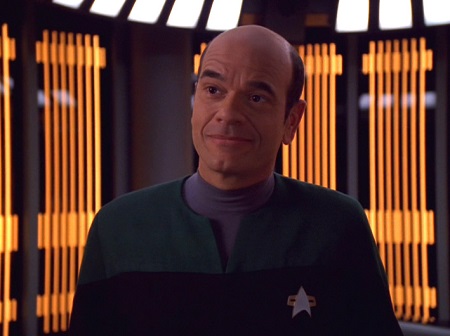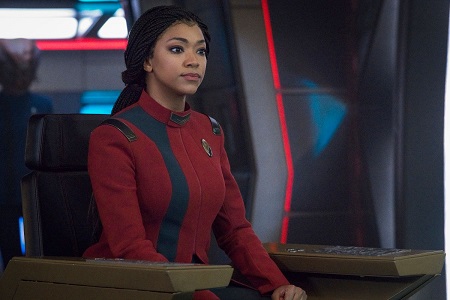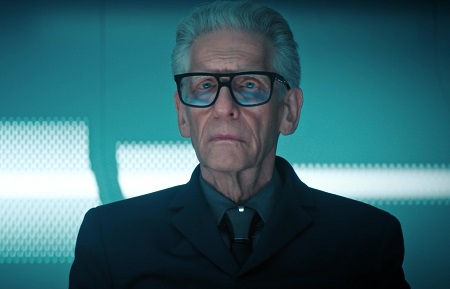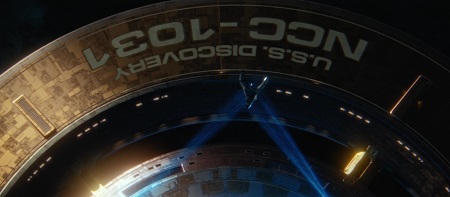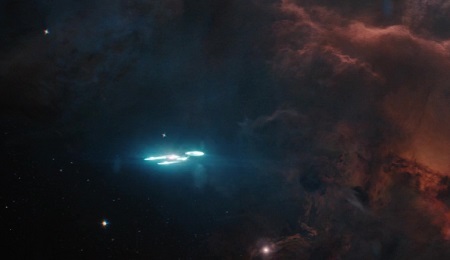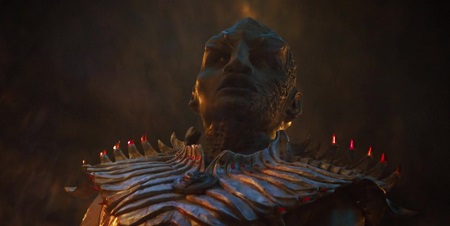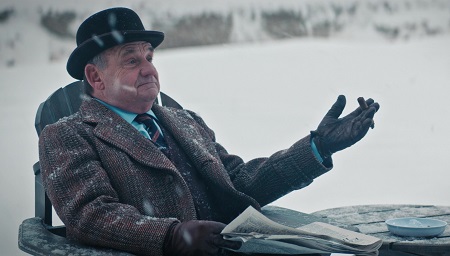
Spoiler Warning: There are spoilers ahead for Star Trek: Discovery Seasons 1-4. Spoilers are also present for the following: Star Trek: Picard Season 1, Short Treks, and for other iterations of the Star Trek franchise.
All Is Possible definitely shook up Star Trek: Discovery! It’s an episode which, as things stand anyway, will have major ramifications for the rest of the show’s run thanks to the departure of Lieutenant Tilly. However, with the episode’s trio of stories largely staying away from the DMA (as the gravitational anomaly is now being called) there really aren’t a lot of new theories joining the list on this occasion. The teaser for The Examples has told us that we’re about to see a big return to that storyline, though, and I certainly don’t mind Discovery doing more of these episodic detours!
This week we had one theory that I’m calling semi-confirmed and one theory from way back in Season 3 that’s seen some significant advancement – but that I’m not yet willing to completely strike off the list! We’re also adding two production-side theories to the list for the first time.
Semi-confirmed theory:
Tilly left the USS Discovery.

I’m calling this one semi-confirmed because I speculated about Tilly potentially leaving the ship – but I didn’t guess how soon it would happen or the exact manner of her departure! In the run-up to All Is Possible, my best guess was that whatever was happening with Tilly would rumble on for most of the rest of Season 4, with any potential departure not coming until closer to the end of the season. I certainly didn’t expect to see two “Tilly tries something new” storylines one after the other, and while her departure was very emotional and bittersweet, there was a slight sense that maybe it could’ve been scheduled a little better so we didn’t have both of Tilly’s big Season 4 episodes back-to-back.
I’d previously suggested that Tilly could change departments, resign from Starfleet, or that the character would be killed off by the writers. As it is we kind of got a combination of the first two: Tilly has left the USS Discovery’s science division to move to Federation HQ and teach at Starfleet Academy. She’ll presumably retain her commission as a Starfleet officer even though she isn’t working aboard a starship for the time being.
As I said in my review of All Is Possible, parts of Tilly’s story with the troublesome cadets almost felt like a backdoor pilot for a new series. With a Starfleet Academy show supposedly being worked on, we may not have seen the last of Tilly in Star Trek!
So that theory was semi-confirmed.
Up next we’ve got two production-side (as opposed to in-universe) theories.
Production-side theory #1:
Tilly’s departure will be permanent.

Mary Wiseman confirmed in an interview with Wil Wheaton on The Ready Room (Discovery’s social media aftershow) that Tilly will be seen again before the end of Season 4. But that doesn’t mean she will be a main character on the show going forward, and her departure feels permanent. Despite that, I’ve seen quite a lot of folks online who don’t believe that Tilly is actually leaving the series – so I wanted to put it out there officially and say that, in my opinion anyway, she is.
Maybe those people know something that I don’t! As I always say, I don’t have any “insider information;” all of this is just speculation on my part. However, I feel that the manner of Tilly’s departure, the fact that she got that emotional sequence with Captain Burnham, a montage showing her leaving the ship, Adira seeming to take over several of her roles, and her departure feeling like the culmination of her arc going back to the latter part of Season 3 all come together to strongly indicate that she won’t be back as a major character. She may yet have a significant role to play in a future Season 4 episode, as has been suggested, but unless Discovery’s writers are really playing with our emotions I believe we’ve seen Tilly’s end as a main character on the show. She may, as suggested, be back in a future Starfleet Academy series, though… so watch this space!
Production-side theory #2:
Star Trek: Discovery isn’t going to be renewed for Season 5.
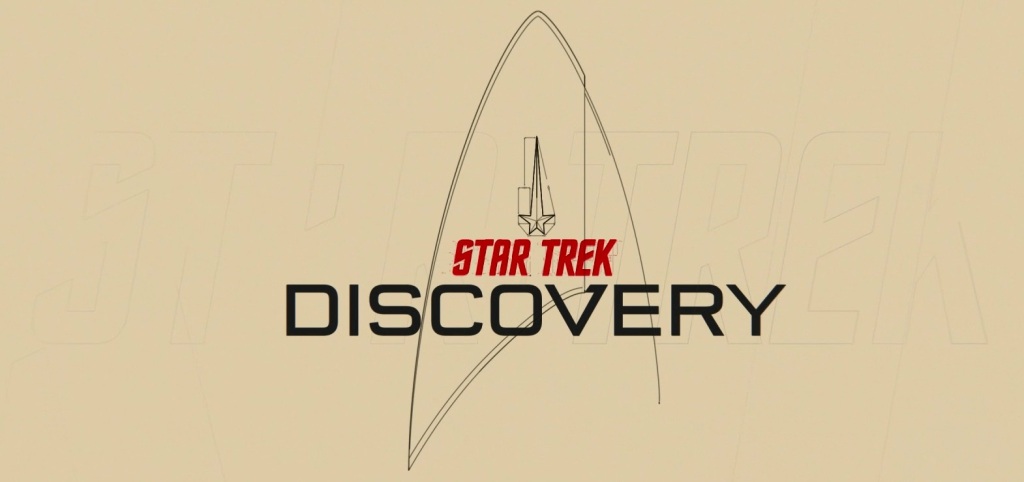
Since Discovery’s first season in 2017, we’ve known by this point in the season that the show has been renewed. This isn’t one of those “I hate new Star Trek” things that we’ve seen doing the rounds online for years; I adore Discovery and genuinely want to see it continue. But it’s profoundly odd to be basically one-third of the way into Season 4 and to have had no announcement about Season 5. For comparison, Star Trek: Picard has been renewed for Season 3 even though Season 2 won’t air until next year!
I’m hopeful that this is just a blip; a temporary delay for reasons unknown, and that the show has been renewed for Season 5 already behind-the-scenes. However, when we look back at Star Trek productions in recent years, it was often apparent that production work was quietly ongoing even if there hadn’t been any official word from ViacomCBS. As far as we know at this stage, there’s been no pre-production work on Season 5, let alone any filming taking place in the Toronto area.
Once again this is a “watch this space” kind of theory. I hope I’m wrong… but the lack of any news or even any significant rumours about the show’s future is beginning to have me worried.
So those are two theories on the production side of things.
Now we’ll get into the main theory list, beginning with any theories that are new or saw any significant movement in All Is Possible. Then, for the sake of keeping everything in one place, we’ll also recap those theories that didn’t change this week.
Theory #1:
Dr Culber is going to tell Stamets to slow down.

Stamets has been almost entirely absent from the past couple of episodes – and in All Is Possible we heard Captain Burnham suggesting that Stamets “won’t slow down,” and is overworking himself as he tries to figure out what’s going on with the DMA. As a result of Stamets dedication to his work, he missed all of Gray’s incorporation in Choose To Live, and we haven’t seen him with Dr Culber, Adira, or Gray since the beginning of the season. He hasn’t even met Gray yet, not properly.
Stamets also didn’t have a chance to speak to Tilly before she left the ship, though he was briefly seen as she departed for Starfleet Academy. In the past, we’ve seen Dr Culber gently remind Stamets that he has other priorities aside from his work, and I’m beginning to wonder if the show is setting up the pair for something similar. I hope we don’t go back to the Season 2 conflict, because that genuinely did not work, but Stamets may need some kind of intervention from the man he loves, pointing out what he’s been missing while he’s been wrapped up in his work.
Theory #2:
President Rillak knows what the DMA is and may be responsible for its creation.

All Is Possible continued a trend that we’ve seen across the opening episodes of Season 4, showing us that President Rillak is a cunning, almost Machiavellian politician, willing to do anything to advance what she considers to be the best interests of the Federation. By bringing Burnham and Saru along to the Ni’Var negotiations she hoped to find a solution to a diplomatic impasse she knew was coming – and she succeeded.
As I said in my review, I believe Captain Burnham needs to be very careful with President Rillak. During the events of All Is Possible, working with Captain Burnham was advantageous to the Federation’s president – but I have no doubt that she’d throw Burnham and the USS Discovery under the bus without so much as blinking if she believed it would be to her advantage. Which brings us to the DMA.

President Rillak might know more about the DMA than she’s currently letting on. If the Federation had created a weapon like this, or it was an experiment gone wrong, covering it up might be her objective even if she wasn’t necessarily the one who ordered the DMA’s creation. President Rillak herself is a character with depth, not simply an “evil admiral” character trope. But it wouldn’t be the first time that Discovery has presented us with a fairly hard-line character in a position of authority who turns out to be concealing a dark secret.
We’ll consider in a moment a few other possible candidates for creating the DMA – if it turns out to be an artificial creation. But the Federation – and by extension, President Rillak – have to be possible contenders too. Season 3 of Discovery showed us the Federation at its weakest, but also arguably as an organisation that was still virtuous at its core. In contrast, we have Season 2’s depiction of Starfleet: reliant on the shady Section 31 and their AI. In short, it wouldn’t be unthinkable for Discovery to go back to that kind of presentation.
Theory #3:
Kovich is an agent (or the head) of Section 31.

This is the theory that’s hanging on by a thread right now! Ever since we met the mysterious Kovich in Season 3, I’ve felt sure that there was something going on with him. His mannerisms, the way he seemed to know more than he was willing to share, and particularly the way he dealt with Empress Georgiou all contributed to that. I began to suspect that he could be an agent – or even the head – of Section 31, the shadowy off-the-books intelligence division that has done some very dubious things!
All Is Possible showed us a different presentation of Kovich. Referred to as Doctor Kovich for the first time, he seems to be playing a senior role in the running of Starfleet Academy. That doesn’t necessarily preclude him working for Section 31, but it is the most significant move away from this theory that we’ve seen so far.

It may yet be revealed that Dr Kovich played a role in Tilly’s away mission going so badly wrong, but I suspect if that had been going to happen we’d have seen it in All Is Possible. David Cronenberg plays the character very stoically, which I think adds to that mysterious sense that has been present since Season 3. In All Is Possible, that contributed somewhat to the sense that he may have known what was going to happen.
If it turns out that the Federation and/or President Rillak are involved somehow with the DMA, maybe Dr Kovich is aware of what’s going on. If he’s involved with Section 31, it may turn out that the organisation has important information about the DMA or even knows how to prevent it from doing any more harm.
So those theories were new or saw movement this week.
Now, as always, we’ll recap all of my other Discovery Season 4 theories. I find it helps to keep the full list in one place; it makes it easier to strike off theories when they’ve been debunked or confirmed, and it means nothing gets forgotten about or left behind! At least, that’s the plan!
Theory #4:
The Guardian of Forever will be back.
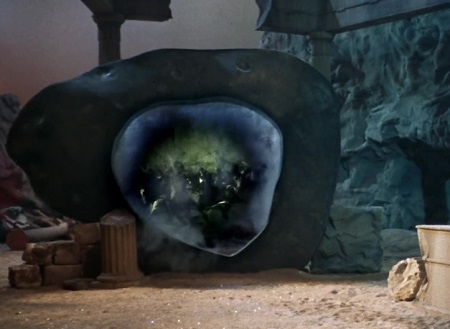
Having reintroduced the Guardian of Forever in Season 3, I wouldn’t be at all surprised to see Discovery return to the Guardian’s planet in Season 4. The DMA is something new and threatening, so it’s possible Captain Burnham might want to ask the Guardian for help or information.
The Guardian of Forever is also the only way we know of at present to travel through time – something that might be necessary if Season 4 makes an attempt to link up with Calypso in a big way. There are many reasons why Captain Burnham might want to revisit the Guardian, and it would be great to bring back actor Paul Guilfoyle, who played the Guardian’s humanoid avatar in Season 3.
Theory #5:
Some areas of the galaxy – such as the Delta Quadrant – avoided the worst effects of the Burn.
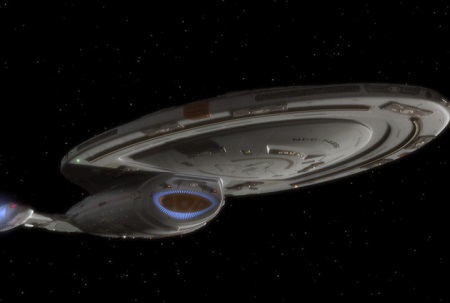
Season 4 touched briefly on the Burn with Su’Kal and Saru in Kobayashi Maru, and may now seek to put last season’s story to bed so it can wrangle with the DMA instead. But one thing I’d be curious to see is the true extent of the disaster – did it reach all four quadrants of the galaxy equally, or did its effects fade out after a certain point? Michael Burnham discovered that the Burn had a point of origin, and that it radiated out from that point like ripples on the surface of water. Ripples eventually diminish, fading away the further they travel, and perhaps that’s true of the Burn as well. There could be whole areas of the galaxy that didn’t even notice the Burn – and maybe the ship and crew will visit one such region.
If the Delta Quadrant was left largely unscathed, for example, what might that mean for the likes of the Borg? It’s possible they aren’t even still around in the 32nd Century, but it’s also possible that they’ve had more than a century to expand and build up their forces while the Federation suffered. To see a full write-up of this theory, click or tap here.
Theory #6:
Captain Burnham and the crew will encounter the Klingons.

By the late 24th Century the Federation and Klingons were firm friends, having been allied for a century and after fighting side-by-side against the Dominion. We don’t know if that alliance endured to the 32nd Century, but it’s certainly plausible to think that it did. The Klingons might even have joined the Federation at some point, and their violent warrior culture may have been significantly pacified.
One thing that could be very interesting to see is how the crew of the USS Discovery – almost all of whom are veterans of the Federation-Klingon war – would respond to that. They’ve worked alongside Klingons like L’Rell before, but many of them still see the Klingons as an old enemy. The story of overcoming that prejudice could mirror episodes like The Wounded from The Next Generation, and would be very interesting to see.
Theory #7:
The crew will have to defend the Verubin Nebula.
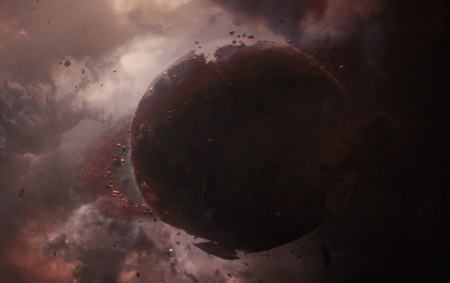
The Federation is still in a weakened state, nowhere near as powerful as it once was. The Verubin Nebula is thus a very tempting target for anyone looking to gain an edge in a galaxy where dilithium is still in short supply. As the only known significant dilithium supply, whoever controls the Verubin Nebula will have a massive tactical advantage.
We can compare the Verubin Nebula to Deep Space Nine’s Bajoran wormhole in that respect – it’s a resource of huge strategic importance. Season 3 didn’t show us much about the makeup of the galaxy’s factions outside of the rump Federation and the Emerald Chain, but it’s got to be possible that factions like the Dominion, Klingon Empire, or even the Borg still exist and would want to seize the Verubin Nebula for themselves.
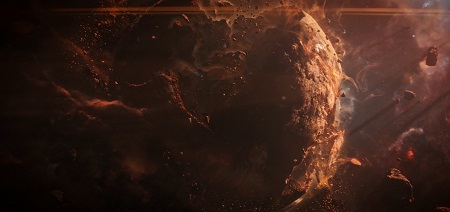
Season 4 has presented Captain Burnham and the crew with a scientific puzzle: the DMA. But that doesn’t mean there won’t be villains in play, and Discovery has introduced us to several compelling and interesting villains over its first three seasons.
To make a long theory short, it would begin to stretch credulity to think that everyone in the known galaxy would see the Federation rebuilding and having access to dilithium and not want to find out for themselves what’s going on. Once the Verubin Nebula’s existence becomes known, even if the Federation promises to share its bounty with all comers, it seems very likely that someone would want to take control of the dilithium supply for themselves.
Theory #8:
The story will connect with the Short Treks episode Calypso.
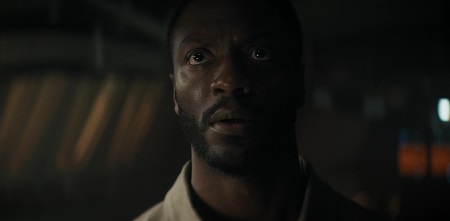
Despite a handful of moments in Season 3 which seemed to connect to Calypso, the story of the season overall ended up going in a very different direction. While we saw a couple of things that arguably did tie in to the Short Treks episode, major things like the USS Discovery undergoing a refit have actually moved the plot even further away.
It’s possible that Calypso will forever remain an outlier in Star Trek’s canon – an episode tied to a vision of Season 2 or Season 3 that was changed before it made it to screen. But earlier in Season 3 it felt like we were getting close to seeing how it could all be tied together – and I’m hopeful that Season 4 will find a way to do so.
Theory #9:
The ban on time travel will be explained in more detail.
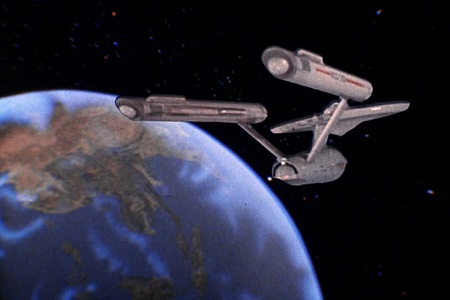
This one is a hope as much as a theory right now! In short, the ban on time travel was introduced early in Season 3 primarily as a way for the writers and producers to avoid questions about why the 32nd Century was so different from how the far future had been depicted in earlier Star Trek productions, as well as to explain things like how the Burn was able to catch the Federation off-guard and why Georgiou couldn’t simply be sent back in time when she needed to.
But the ban itself raises some issues – the biggest one being the lack of detail on how it works and how something like this could possibly be enforced. As I said several times last season, it isn’t possible to just un-invent a technology so useful and powerful as time travel. Even just a few lines of dialogue going into a little more detail on the mechanisms involved in the ban would be really useful.
Theory #10:
The Federation has flouted the ban on time travel.
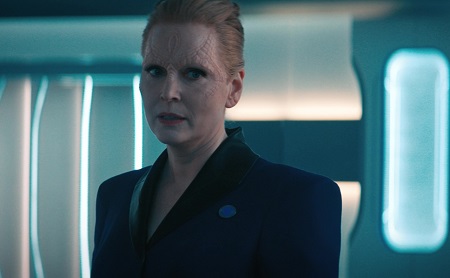
Sticking with the time travel ban, another theory I had last season was that the Federation – and Section 31 in particular – might have deliberately flouted the ban and failed to abide by the rules. Someone as straight-laced and committed to Starfleet ideals as Admiral Vance is highly unlikely to have sanctioned such a move, but someone like the shadowy Kovich might have. President Rillak could also be involved.
Obviously the bulk of the season’s story will deal with the DMA. But there’s scope to either talk about the time travel ban in a standalone episode or even tie the two stories together – perhaps the anomaly has been unleashed as a result of unsanctioned time travel.
Theory #11:
Burnham won’t stay in the captain’s chair.
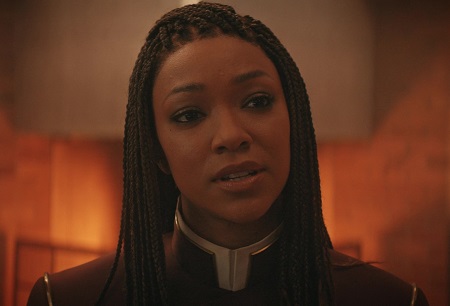
This is a controversial one, so let me just say up front that I’m neither in favour of this theory nor opposed to it – I just think it’s a possibility. As things stand, Discovery has had four different captains across its four seasons. One of the show’s unique points of interest within Star Trek’s broader canon are the very different ways in which these individual captains commanded the ship and crew.
It’s got to be considered at least a possibility, then, that the show will continue this trend. This doesn’t mean Captain Burnham will be killed off; I’d actually argue she’s pretty safe. But there are many different routes to her potentially leaving the ship, such as a desire for freedom that we saw in Season 3, or even perhaps taking up a new, more senior role within Starfleet.
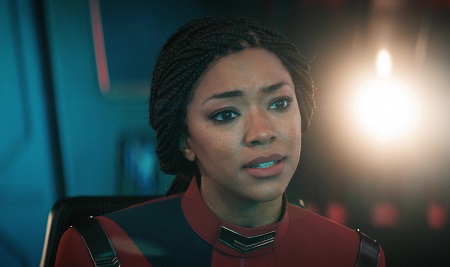
If this theory were to come to pass, it would be something I’d expect to see at the very end of the season. Even if Burnham seems 100% committed to her new role as captain, I don’t think it’s a theory we can definitively rule out.
It’s worth mentioning that at time of writing Discovery hasn’t been officially renewed for a fifth season – so all this talk of who’ll be in the captain’s chair by then could be moot! And of course this theory has a very strong counter-argument: that Discovery’s main story arc across its first three seasons can be read as Burnham’s ascent to the captain’s chair.
Theory #12:
There will be a character crossover from a past iteration of Star Trek.

This theory returns from Season 3, where I doggedly clung to it for the entire season!
Discovery’s 32nd Century setting has shot Captain Burnham and the crew far beyond anything in Star Trek’s established canon, and that should mean that practically everyone we remember from other Star Trek shows won’t be around any longer. But this is Star Trek – with some creatively-written technobabble, practically any major character could have survived all the way through to the 32nd Century!

It’s also possible for Captain Burnham to discover the logs of a long-dead officer; someone we as the audience would be familiar with. While this would be less of a “crossover” than if a character from the past could be physically present, it would still be a lot of fun to see!
There are a handful of characters who could have survived to the 32nd Century based on what we know about them from past iterations of the franchise. Included in this category would be people like Soji, Voyager’s Doctor, and a few others. But as we’ve seen in episodes like Relics and even the film Generations, all it would take to make a big crossover happen is some kind of temporal anomaly, stasis field, or other technobabble!
Theory #13:
A major character will be killed.
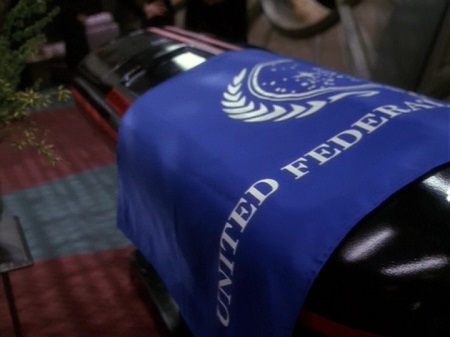
Season 3 saw a couple of major departures: Mirror Georgiou entered the Guardian of Forever’s portal, and Nhan remained behind aboard the USS Tikhov. Yet despite the dangers the crew faced as they navigated the 32nd Century, battled the Emerald Chain, and figured out the mysteries of the Burn and the Verubin Nebula, only one ally – Ryn – lost their life.
Killing off a character can be an excellent way to communicate the stakes involved if it happens at a relatively early stage. It can also be a storyline that brings a lot of emotion, as we have to say goodbye to a beloved member of the crew.
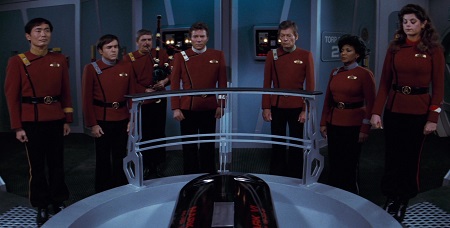
In short, I think there are plenty of reasons on the production side why killing off a major character could make sense in Season 4. Though we’ve already had one departure this season – that of Lieutenant Tilly – I still believe that Discovery could very easily go down this road, especially considering how dangerous the DMA currently is.
For a breakdown of which characters I thought might be in danger before the season premiered, check out my list of “death predictions” by clicking or tapping here.
Theory #14:
The DMA is a superweapon.
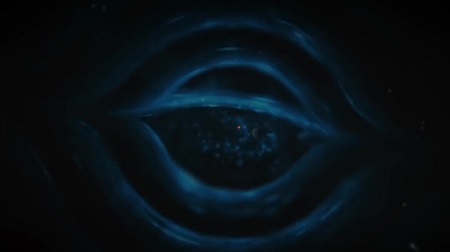
We touched on this theory above when we considered the Federation’s possible complicity in the creation of the DMA, but there are many other ways such a story could pan out. The DMA’s unpredictable nature, as noted by Tilly and Saru at the end of Anomaly, could imply that there’s an intelligence at work dictating its moves. This could be the DMA itself if it’s sentient (or contains a sentient life-form) but it could also be the case that it’s being controlled or manipulated by something or someone externally.
If the anomaly turns out not to be a natural phenomenon, and is indeed deliberately targetting the Federation, who might the possible culprits be? And what would be the purpose behind attacking the Federation in this manner? If it’s the precursor to an invasion, perhaps later in the season we’ll see whoever is responsible making their next move.
Theory #14a:
The Borg are responsible.
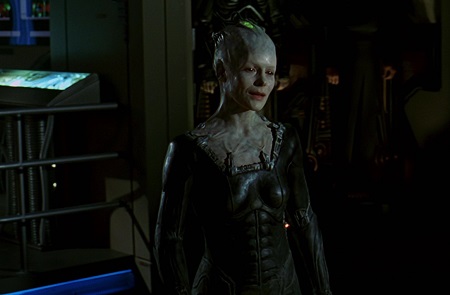
We don’t know whether the Borg Collective still exists in the 32nd Century; it hasn’t even been mentioned since the USS Discovery’s arrival. However, few other established factions seem capable of creating a weapon on the scale of the DMA. This wouldn’t be in line with the Borg’s usual modus operandi, as they prefer to assimilate rather than attack from afar. But a lot may have changed in the centuries since we last encountered them, meaning this could be the opening salvo of a Borg attack… or the last gasp of a dying Collective.
Theory #14b:
The super-synths from Picard Season 1 are responsible.
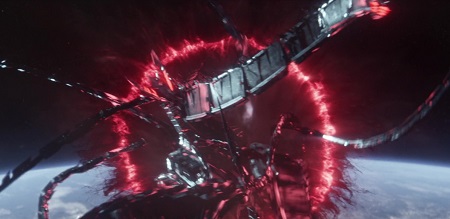
We still don’t know very much about the super-synths that Soji and Sutra attempted to contact in the Season 1 finale of Star Trek: Picard. Other than claiming to offer support and help to synthetic life, what are their goals and motivations? Was their offer even genuine, or was it a trap? The mechanical tentacles glimpsed in Picard Season 1 looked terrifying! Moreover, we know that the super-synths have the technology to move stars – something only possible with an advanced understanding of gravity. Creating a stable 8-star octonary system is an incredible technological and gravitational feat, so they have precedent of a sort when it comes to working with gravity. Finally, Discovery Season 4 has already made connections with Picard Season 1: the Qowat Milat and the synth transfer process used for Gray.
Theory #14c:
The Kelvan Empire is responsible.

This one might seem to come completely out of the blue! In The Original Series, Captain Kirk met representatives of the Kelvan Empire, a faction originally from the Andromeda galaxy. Seeking a new home, a Kelvan scouting party had reached the Milky Way and were looking for worlds to conquer. Kirk would ultimately dispatch an unmanned starship offering to help the Kelvan Empire find new worlds to settle – but what if his offer was rejected? Given the vast distances and travel time involved, the timelines kind of line up for the Kelvan Empire to return to the Milky Way.
Theory #14d:
The Sphere-Builders from Enterprise are responsible.
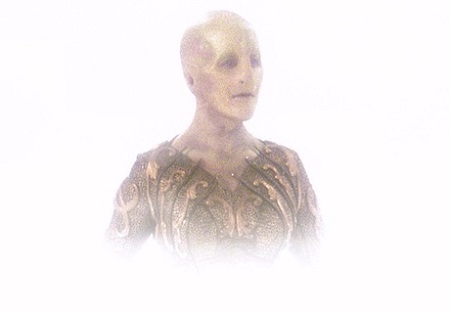
A defeated faction in one of the Temporal Wars, the Sphere-Builders initially hoped to convert a large swathe of the Alpha Quadrant to match their native extradimensional realm, and constructed a number of large space stations known as Spheres to facilitate this transformation. Crewman Daniels would tell Captain Archer that the Sphere-Builders were defeated in the 26th Century, but could they have since rebuilt? The DMA isn’t necessarily the same as what they were trying to do with the Spheres, but they’re one of the few factions in Star Trek that might be capable of creating a weapon on this scale.
Theory #15:
Saru will be given the captaincy of the USS Voyager-J.
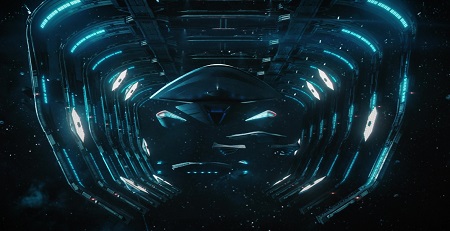
Saru’s future was briefly discussed before he offered to serve as Captain Burnham’s first officer in the episode Anomaly. He has already been offered a command of his own, so Starfleet clearly values his command abilities and experience. President Rillak was seen to be assessing Captain Burnham’s suitability for the captaincy of the USS Voyager-J in Kobayashi Maru… and she mentioned having a shortlist of candidates. Could Saru be on her list?
Several of the qualities that President Rillak said she was looking for in a potential captain seem to apply to Saru. He’s more level-headed, less likely to put himself in a dangerous situation, and more inclined to think of the big picture. He has a weakness when it comes to Kaminar, as we saw toward the end of Season 3, but generally speaking he isn’t someone who lets his emotions get the better of him. His wisdom and calm demeanour could be valuable in the captain’s chair of the Federation flagship. This could also set the stage for his departure from the show, or possibly even for a new show following his adventures aboard his new ship.
Theory #16:
The DMA is (or contains) a sentient life-form.

“It was only trying to communicate!” has become a Star Trek cliché, often used to describe how the seemingly-aggressive actions of an alien life-form are actually something innocuous. Maybe the same is true of the DMA: at its core is a life form, perhaps one not dissimilar to the Sphere seen in Season 2, and it’s on its own mission of exploration.
V’Ger from The Motion Picture is an interesting comparison. Like the DMA, V’Ger was massive in size, capable of destroying space stations, fleets of ships, and even threatening to destroy entire planets. When Admiral Kirk and the crew of the Enterprise were able to figure out V’Ger, however, they found a life-form at its core, one which was just as curious to learn and grow as they were.
Theory #17:
Book will find Kyheem and Leto inside the DMA.

In Star Trek: Generations, Captain Picard encountered Captain Kirk inside the Nexus – despite Kirk being declared “dead” after the Enterprise-B encountered the energy ribbon almost eighty years earlier. We don’t know what the DMA is yet; one of my very early pre-season theories involved the Nexus, but that seems to be debunked already! However, the anomaly’s mysterious nature raises the faint possibility that at least some of those it appears to have “killed” may not be as dead as they first appear.
This theory is, I freely admit, a bit of a long-shot. And it hinges on a fundamental question underlying the story of the season: is there more to the DMA than meets the eye? If the anomaly is just an extreme example of space weather, flitting through Federation space destroying anything unfortunate enough to be in its way, then probably everyone on Kwejian is dead. But if the anomaly harbours some kind of gateway, wormhole, portal, time vortex, or any of the other Star Trek-y technobabble phenomena that we’ve seen across the franchise’s history, then it’s possible that at least some of the folks on Kwejian found themselves transported to whatever realm lies inside of the anomaly.
Theory #18:
Captain Burnham and/or the Red Angel time travel suits from Season 2 are connected to the DMA.
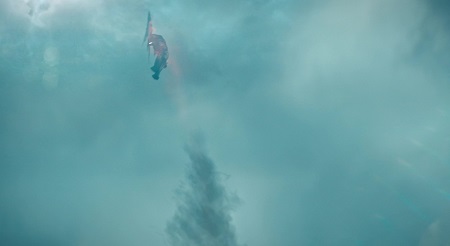
I’m not sure that this one is particularly likely, but as I said last year about a possible Burnham connection to the Burn, not only does Discovery kind of have a precedent for telling this kind of story, but there would also be something very dramatic about this revelation. In this case, Burnham would be indirectly and unknowingly responsible for creating something devastatingly damaging. How would she react to that, and how would Book react given what happened to Kwejian?
Perhaps the Red Angel suit, which Burnham sent back in time in the Season 3 premiere, malfunctioned somehow, and its powerful wormhole-creating technology gave rise to the DMA. If the Red Angel suit completed its journey back to the 23rd Century, the anomaly may have had centuries to grow and expand unchecked. If time travel is involved, perhaps a future Captain Burnham or a parallel universe Captain Burnham could be responsible for the anomaly’s creation – either intentionally or not.
Theory #19:
We haven’t seen the last of the Abronians.
I currently have four ideas for different ways that the Abronians – the non-humanoid race that Captain Burnham, Tilly, and the Qowat Milat helped save from cryo-sleep in the episode Choose To Live – could play a further role in Season 4.
Theory #19a:
The Abronians’ homeworld was destroyed by the DMA.
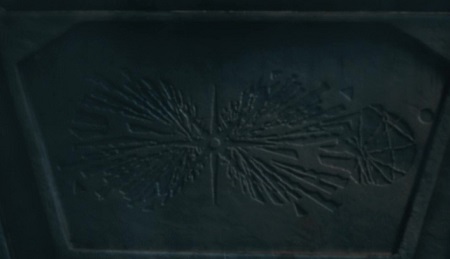
After arriving at the Abronians’ cryo-ship, Captain Burnham found a stone carving that seemed to depict the destruction of the Abronians’ homeworld. This carving was only shown on screen briefly, but it seemed to show the planet being damaged or destroyed in a large explosion. Burnham credited the planet’s destruction to a “supernova,” and the story then raced ahead.
Considering that the main thrust of the season so far has been about the DMA, perhaps Burnham was incorrect: the Abronian homeworld was destroyed by the anomaly, not a supernova.
Theory #19b:
The Abronians’ homeworld was on the “other side” of the DMA.

One clip in the second Season 4 trailer appeared to show Captain Burnham leading the USS Discovery inside the DMA. We don’t yet know what that means, nor to what extent words like “inside” the anomaly or “the other side” of the anomaly are even coherent concepts. But many times in past iterations of Star Trek we’ve seen things like wormholes and gateways to parallel universes. Perhaps the anomaly is something similar – and passing through it leads to a different dimension, parallel reality, or just a faraway region of space.
One thing struck me as odd about the Abronians: the Federation was entirely unaware of them, despite the Abronian cryo-ship being relatively close to Federation space – such that Captain Burnham could reach it using Book’s ship in a short span of time. It’s possible that the Abronians had been asleep for millennia, unnoticed by the Federation and the wider galaxy for all that time. But it’s also at least possible that their cryo-ship is a newcomer to the area. If so, perhaps it arrived here via the DMA.
Theory #19c:
The Abronians will return to help the Federation later in the season.
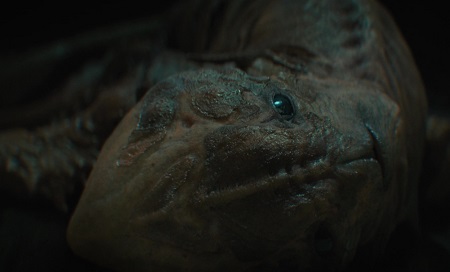
One of the themes of Discovery since Season 3 has been connection, including building connections between the Federation and other races and organisations. The Abronians were awoken from cryo-sleep thanks to the interventions of Captain Burnham and Tilly – at least in part – and they may seek to repay the Federation, or Captain Burnham personally, for that help.
We saw this play out last season with Ni’Var; in the season finale Ni’Var ships raced to the Federation’s aid as the Emerald Chain attacked. Perhaps the Abronians will likewise step up to help when the Federation needs allies.
Theory #19d:
The Abronians’ moon-ship may be useful in a later story.

At this stage I can’t envision precisely what use Captain Burnham and the crew might have for a moon-sized starship… but that doesn’t mean such a need won’t arise! The Abronians’ cryo-ship is huge, and at least superficially seems to have the mass of a moon or small planetoid. If Captain Burnham and the crew needed something that large for some purpose, perhaps they’ll return and either take it or negotiate for it.
As we saw in Choose To Live, the moon-ship was in full working order. All it needed was some extra dilithium to power up and it was perfectly capable of moving under its own power, and its computer systems were still functional. The only system that seemed to have failed was the wake-up timer! So if – for reasons yet unknown – the crew need a huge starship, perhaps we won’t have seen the last of the moon-ship.
So that’s it!

At present, those are all of the theories I currently have in play. Some are more likely than others, some are perhaps plausible but may not come into play in Season 4, and maybe some are just plain silly! But I have a lot of fun thinking them up and writing these lists, and that’s really what this is all about!
After two episodes in a row in which we got minimal advancement of the season’s main storyline, The Examples seems to be teasing us with a return to the DMA in a significant way. I can hardly wait to see what lies in store for Captain Burnham and the crew!
Before we go, one final point. I write up these theories because I like Star Trek and I like writing. But for some folks, fan theories can hamper their enjoyment of a film or television show. It’s worth keeping in mind that most of these theories probably won’t pan out, and we have to be prepared for the fact that even the most well-constructed fan theory, no matter how fun and plausible it seems, simply won’t turn out to be true. If you find that speculating and reading theories is beginning to detract from your enjoyment of Star Trek: Discovery – or any other television show or film – it might be a good idea to take a break for a while.
Star Trek: Discovery Season 4 is available to stream now on Paramount+ in the United States, Scandinavia, Latin America, and Australia. The show is on Pluto TV in the UK, France, Germany, Italy, and other parts of Western Europe at 9pm on Fridays and Saturdays. Individual episodes or the full season can be purchased on iTunes, Amazon Video, and possibly other platforms in the UK, parts of Europe, and select other countries. The Star Trek franchise – including Discovery and all other properties mentioned above – is the copyright of ViacomCBS. This article contains the thoughts and opinions of one person only and is not intended to cause any offence.



